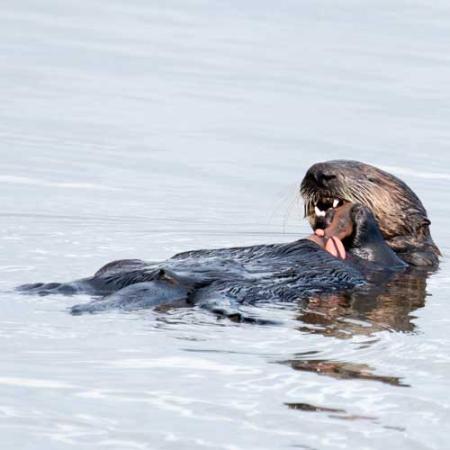Using micro Computed Tomography (microCT) scans, we build 3D digital replicas of bat skulls from the Burke Museum and other institutions. Most bat skulls are extremely small and delicate, so microCT scans allow us to measure features of their anatomy that are not otherwise possible, including structures inside the skull.
The scans are a unique way to showcase the diversity of shapes in bat skulls and how muscles are organized in species with different diets. We thought this might be a unique and engaging opportunity to share the specimens with the general public using virtual reality or augmented reality. And with that idea in mind, we created the “Pocket Bats!” project using 3D models of bat skulls from our research on feeding adaptations in bats.
On the Santana Lab website, you can download and print “Pocket Bats!” cards for a variety of bat species; these cards include information on their taxonomy, diet, and also include charming portraits of the bats from bat biologist, Dr. Brock Fenton.

A virtual bat skull scan appears over its "Pocket Bats!" card.

The comparison of the real bat skull to the virtual one that appears with the "Pocket Bats" card.
By turning and moving the card in view of your smart device’s camera, you can turn the model to look at different angles and even look inside the skulls. We’ve also included links to additional resources about the bat species.
In addition to uploading "Pocket Bats!" cards on the Santana Lab website, we are sharing this project at teacher workshops, international research conferences, and at several museums, including the Burke Museum and the Museum of Flight.
We currently have twenty species of bats represented as "Pocket Bats!" cards, and will continue to add more every couple of weeks, including adding more specimens that include jaw muscles. Stay tuned!
---
See more from the Santana Lab and Burke Museum Mammalogy.





